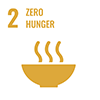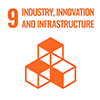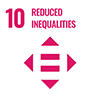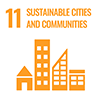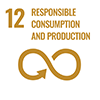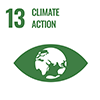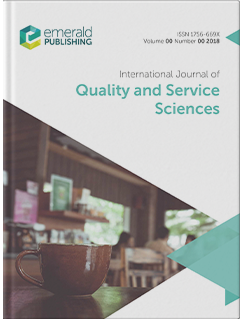
International Journal of Quality and Service Sciences
Submit to the journal
Submissions to the International Journal of Quality and Service Sciences are made using ScholarOne Manuscripts, the online submission and peer review system. Registration and access is available at http://mc.manuscriptcentral.com/ijqss. If you are unable to find the information you need in the author guidelines or our author resources (http://emeraldgrouppublishing.com/authors/index.htm) section, please email [email protected] for assistance. Please quote the journal name, your contact details and the information you require.
Registering on ScholarOne Manuscripts
If you have not yet registered on ScholarOne Manuscripts, please follow the instructions below:
- Please log on to: http://mc.manuscriptcentral.com/ijqss
- Click on Create Account
- Follow the on-screen instructions, filling in the requested details before proceeding
- Your username will be your email address and you have to input a password of at least 8 characters in length and containing two or more numbers
- Click Finish and your account has been created.
Submitting an article to the International Journal of Quality and Service Sciences on ScholarOne Manuscripts
- Please log on to the International Journal of Quality and Service Sciences at http://mc.manuscriptcentral.com/ijqss with your username and password. This will take you through to the Welcome page (To consult the Author Guidelines for this journal, click on the Home Page link in the Resources column)
- Click on the Author Centre button
- Click on the submit a manuscript link which will take you through to the Manuscript Submission page
- Complete all fields and browse to upload your article
- When all required sections are completed, preview your .pdf proof
- Submit your manuscript
Review process
Each paper is reviewed by the editor and, if it is judged suitable for this publication, it is then sent to at least two independent referees for double blind peer review.
Copyright
Articles submitted to the journal should not have been published before in their current or substantially similar form, or be under consideration for publication with another journal. Please see Emerald's originality guidelines for details. Use this in conjunction with the points below about references, before submission i.e. always attribute clearly using either indented text or quote marks as well as making use of the preferred Harvard style of formatting. Authors submitting articles for publication warrant that the work is not an infringement of any existing copyright and will indemnify the publisher against any breach of such warranty. For ease of dissemination and to ensure proper policing of use, papers and contributions become the legal copyright of the publisher unless otherwise agreed.
The editor may make use of iThenticate software for checking the originality of submissions received. Please see our press release for further details.
Third party copyright permissions
Prior to article submission, authors should clear permission to use any content that has not been created by them. Failure to do so may lead to lengthy delays in publication. Emerald is unable to publish any article which has permissions pending. The rights Emerald requires are:
- Non-exclusive rights to reproduce the material in the article or book chapter.
- Print and electronic rights.
- Worldwide English language rights.
- To use the material for the life of the work (i.e. there should be no time restrictions on the re-use of material e.g. a one-year licence).
When reproducing tables, figures or excerpts (of more than 250 words) from another source, it is expected that:
- Authors obtain the necessary written permission in advance from any third party owners of copyright for the use in print and electronic formats of any of their text, illustrations, graphics, or other material, in their manuscript. Permission must also be cleared for any minor adaptations of any work not created by them.
- If an author adapts significantly any material, the author must inform the copyright holder of the original work.
- Authors obtain any proof of consent statements
- Authors must always acknowledge the source in figure captions and refer to the source in the reference list.
- Authors should not assume that any content which is freely available on the web is free to use. Authors should check the website for details of the copyright holder to seek permission for re-use.
Emerald is a member of the STM Association and participates in the reciprocal free exchange of material with other STM members. This may mean that in some cases, authors do not need to clear permission for re-use of content. If so, please highlight this upon submission. For more information and additional help, please follow the Permissions for your Manuscript guide.
Author responsibilities
Our goal is to provide you with a professional and courteous experience at each stage of the review and publication process. There are also some responsibilities that sit with you as the author. Our expectation is that you will:
- Respond swiftly to any queries during the publication process.
- Be accountable for all aspects of your work. This includes investigating and resolving any questions about accuracy or research integrity
- Treat communications between you and the journal editor as confidential until an editorial decision has been made.
- Read about our research ethics for authorship. These state that you must:
- Include anyone who has made a substantial and meaningful contribution to the submission (anyone else involved in the paper should be listed in the acknowledgements).
- Exclude anyone who hasn’t contributed to the paper, or who has chosen not to be associated with the research.
- In accordance with COPE’s position statement on AI tools, Large Language Models cannot be credited with authorship as they are incapable of conceptualising a research design without human direction and cannot be accountable for the integrity, originality, and validity of the published work. The author(s) must describe the content created or modified as well as appropriately cite the name and version of the AI tool used; any additional works drawn on by the AI tool should also be appropriately cited and referenced. Standard tools that are used to improve spelling and grammar are not included within the parameters of this guidance. The Editor and Publisher reserve the right to determine whether the use of an AI tool is permissible.
- If your article involves human participants, you must ensure you have considered whether or not you require ethical approval for your research, and include this information as part of your submission. Find out more about informed consent.
Generative AI usage key principles
- Copywriting any part of an article using a generative AI tool/LLM would not be permissible, including the generation of the abstract or the literature review, for as per Emerald’s authorship criteria, the author(s) must be responsible for the work and accountable for its accuracy, integrity, and validity.
- The generation or reporting of results using a generative AI tool/LLM is not permissible, for as per Emerald’s authorship criteria, the author(s) must be responsible for the creation and interpretation of their work and accountable for its accuracy, integrity, and validity.
- The in-text reporting of statistics using a generative AI tool/LLM is not permissible due to concerns over the authenticity, integrity, and validity of the data produced, although the use of such a tool to aid in the analysis of the work would be permissible.
- Copy-editing an article using a generative AI tool/LLM in order to improve its language and readability would be permissible as this mirrors standard tools already employed to improve spelling and grammar, and uses existing author-created material, rather than generating wholly new content, while the author(s) remains responsible for the original work.
- The submission and publication of images created by AI tools or large-scale generative models is not permitted.
Committee on Publication Ethics (COPE)
Emerald supports the development of, and practical application of consistent ethical standards throughout the scholarly publishing community. All Emerald’s journals and editors are members of the Committee on Publication Ethics (COPE) which provides advice on all aspects of publication ethics. Emerald follows the Committee’s flowcharts in cases of research and publication misconduct, enabling journals to adhere to the highest ethical standards in publishing. For more information on Emerald’s publication ethics policy, please click here.
Copyright forms
Where possible, Emerald seeks to obtain copyright for the material it publishes, without authors giving up their scholarly rights to reuse the work.
Assigning copyright to Emerald allows us to:
- Act on your behalf in instances such as copyright infringement or unauthorised copying
- Protect your moral rights in cases of plagiarism or unauthorised derivative works
- Offer a premium service for permission requests
- Invest in new platforms and services for the journals or book series you have published in
- Disseminate your work as widely as possible, ensuring your work receives the citations it deserves
- Recoup copyright fees from reproduction rights organisations to reinvest in new initiatives and author/user services, such as the Research Fund Awards and the Outstanding Doctoral Research Awards.
If an article is accepted for publication in an Emerald journal authors will be asked to submit a copyright form through ScholarOne. All authors are sent an email with links to their copyright forms which they must check for accuracy and submit electronically.
If authors can not assign copyright to Emerald, they should discuss this with the journal Content Editor. Each journal has an Editorial Team page which will list the Content Editor for that journal.
Manuscript Services
We’re pleased to work in partnership with Editage who can help you get your research submission-ready with language editing and translation, visuals or consulting. Visit the platform to find out more.
Transparency and Openness Promotion (TOP) Guidelines
Emerald is a signatory of the Transparency and Openness Promotion (TOP) Guidelines, a framework that supports the reproducibility of research through the adoption of transparent research practices. Emerald encourages authors to cite and fully reference all data, program code and other methods in their article. References for data sets and program codes should include a persistent identifier, such as a Digital Object Identifier (DOI). Persistent identifiers ensure future access to unique published digital objects, such as a text or data sets. Persistent identifiers are assigned to data sets by digital archives, such as institutional repositories and partners in the Data Preservation Alliance for the Social Sciences (Data-PASS). When citing data we advise authors to follow appropriate international and national procedures with respect to data protection, rights to privacy and other ethical considerations. For further guidance please refer to our publication ethics guidelines. For an example on how to cite data sets, please refer to the References section below.
Final submission
The author must ensure that the manuscript is complete, grammatically correct and without spelling or typographical errors. Before submitting, authors should check their submission completeness using the available Article Submission Checklist. Proofs will be emailed prior to publication.
Open access submissions and information
Emerald currently offers two routes for Open Access in all journal publications, Green Open Access (Green OA) and Gold Open Access (Gold OA). Authors who are mandated to make the branded Publisher PDF (also known as the "Version of Record") freely available immediately upon publication can select the Gold OA route during the submission process. More information on all Open Access options can be found here.
For more information on HEFCE, visit our author rights page.
Manuscript requirements
Please prepare your manuscript before submission, using the following guidelines:
|
Article files should be provided in Microsoft Word format. LaTex files can be used if an accompanying PDF document is provided. PDF as a sole file type is not accepted, a PDF must be accompanied by the source file. Acceptable figure file types are listed further below. |
|
|
Articles should be between 4000 and 8000 words in length. This includes all text including references and appendices. Please allow 280 words for each figure or table. |
|
|
A title of not more than eight words should be provided. |
|
|
All contributing authors’ names should be added to the ScholarOne submission, and their names arranged in the correct order for publication.
|
|
|
Authors who wish to include these items should save them together in an MS Word file to be uploaded with the submission. If they are to be included, a brief professional biography of not more than 100 words should be supplied for each named author. |
|
|
Authors must declare all sources of external research funding in their article and a statement to this effect should appear in the Acknowledgements section. Authors should describe the role of the funder or financial sponsor in the entire research process, from study design to submission. |
|
|
Authors must supply a structured abstract in their submission, set out under 4-7 sub-headings (see our "How to... write an abstract" guide for practical help and guidance):
Maximum is 250 words in total (including keywords and article classification, see below). |
|
|
Authors should provide appropriate and short keywords in the ScholarOne submission that encapsulate the principal topics of the paper (see the How to... ensure your article is highly downloaded guide for practical help and guidance on choosing search-engine friendly keywords). The maximum number of keywords is 12. |
|
|
Authors must categorize their paper as part of the ScholarOne submission process. The category which most closely describes their paper should be selected from the list below. |
|
|
Headings must be concise, with a clear indication of the distinction between the hierarchy of headings. |
|
|
Notes or Endnotes should be used only if absolutely necessary and must be identified in the text by consecutive numbers, enclosed in square brackets and listed at the end of the article. |
|
|
All Figures (charts, diagrams, line drawings, web pages/screenshots, and photographic images) should be submitted in electronic form.
|
|
|
Tables should be typed and included in a separate file to the main body of the article. The position of each table should be clearly labelled in the body text of article with corresponding labels being clearly shown in the separate file. |
|
|
Supplementary files |
Where tables, figures, appendices, and other additional content are supplementary to the article but not critical to the reader’s understanding of it, you can choose to host these supplementary files alongside your article on Insight, Emerald’s content hosting platform, or on an institutional or personal repository. All supplementary material must be submitted prior to acceptance. If you choose to host your supplementary files on Insight, you must submit these as separate files alongside your article. Files should be clearly labelled in such a way that makes it clear they are supplementary; Emerald recommends that the file name is descriptive and that it follows the format ‘Supplementary_material_appendix_1’ or ‘Supplementary tables’. All supplementary material must be mentioned at the appropriate moment in the main text of the article, there is no need to include the content of the file but only the file name. A link to the supplementary material will be added to the article during production, and the material will be made available alongside the main text of the article at the point of EarlyCite publication. Please note that Emerald will not make any changes to the material; it will not be copyedited, typeset, and authors will not receive proofs. Emerald therefore strongly recommends that you style all supplementary material ahead of acceptance of the article. Emerald Insight can host the following file types and extensions:
If you choose to use an institutional or personal repository, you should ensure that the supplementary material is hosted on the repository ahead of submission, and then include a link only to the repository within the article. It is the responsibility of the submitting author to ensure that the material is free to access and that it remains permanently available. Please note that extensive supplementary material may be subject to peer review; this is at the discretion of the journal Editor and dependent on the content of the material (for example, whether including it would support the reviewer making a decision on the article during the peer review process). |
|
References to other publications must be in Harvard style and carefully checked for completeness, accuracy and consistency. This is very important in an electronic environment because it enables your readers to exploit the Reference Linking facility on the database and link back to the works you have cited through CrossRef. |
|
|
For books |
Surname, Initials (year), Title of Book, Publisher, Place of publication. |
|
For book chapters |
Surname, Initials (year), "Chapter title", Editor's Surname, Initials, Title of Book, Publisher, Place of publication, pages. |
|
For journals |
Surname, Initials (year), "Title of article", Journal Name, volume issue, pages. |
|
For published |
Surname, Initials (year of publication), "Title of paper", in Surname, Initials (Ed.), Title of published proceeding which may include place and date(s) held, Publisher, Place of publication, Page numbers. |
|
For unpublished |
Surname, Initials (year), "Title of paper", paper presented at Name of Conference, date of conference, place of conference, available at: URL if freely available on the internet (accessed date). |
|
For working papers |
Surname, Initials (year), "Title of article", working paper [number if available], Institution or organization, Place of organization, date. |
|
For encyclopedia entries |
Title of Encyclopedia (year) "Title of entry", volume, edition, Title of Encyclopedia, Publisher, Place of publication, pages. |
|
For newspaper |
Surname, Initials (year), "Article title", Newspaper, date, pages. |
|
For newspaper |
Newspaper (year), "Article title", date, pages. |
|
For archival or other unpublished sources |
Surname, Initials, (year), "Title of document", Unpublished Manuscript, collection name, inventory record, name of archive, location of archive. |
|
For electronic sources |
If available online, the full URL should be supplied at the end of the reference, as well as a date that the resource was accessed. |
|
For data |
Surname, Initials (year), Title of Data Set, Name of data repository, available at: Persistent URL |
The submission process
All manuscripts should be submitted through our editorial system by the corresponding author.
The only way to submit to the journal is through the journal’s ScholarOne site as accessed via the Emerald website, and not by email or through any third-party agent/company, journal representative, or website. Submissions should be done directly by the author(s) through the ScholarOne site and not via a third-party proxy on their behalf.
A separate author account is required for each journal you submit to. If this is your first time submitting to this journal, please choose the Create an account or Register now option in the editorial system. If you already have an Emerald login, you are welcome to reuse the existing username and password here.
Please note, the next time you log into the system, you will be asked for your username. This will be the email address you entered when you set up your account.
Don't forget to add your ORCiD ID during the submission process. It will be embedded in your published article, along with a link to the ORCiD registry allowing others to easily match you with your work. Don’t have one yet?
It only takes a few moments to register for a free ORCiD identifier.
Visit the ScholarOne support centre for further help and guidance.
Manuscript transfer service
Emerald’s manuscript transfer service takes the pain out of the submission process if your manuscript doesn’t fit your initial journal choice. Our team of expert Editors from participating journals work together to identify alternative journals that better align with your research, ensuring your work finds the ideal publication home it deserves. Our dedicated team is committed to supporting authors like you in finding the right home for your research.
If a journal is participating in the manuscript transfer program, the Editor has the option to recommend your paper for transfer. If a transfer decision is made by the Editor, you will receive an email with the details of the recommended journal and the option to accept or reject the transfer. It’s always down to you as the author to decide if you’d like to accept. If you do accept, your paper and any reviewer reports will automatically be transferred to the recommended journals. Authors will then confirm resubmissions in the new journal’s ScholarOne system.
Our Manuscript Transfer Service page has more information on the process.
Frequently asked questions
|
Do you publish |
For questions about open access, please visit the Open Access section of the website. |
|
Is there a submission fee |
The only time we will ever ask you for money to publish in an Emerald journal is if you have chosen to publish via the gold open access route. You will be asked to pay an APC (article-processing charge) once your paper has been accepted (unless it is a sponsored open access journal), and never at submission. At no other time will you be asked to contribute financially towards your article’s publication, processing, or review. If you haven’t chosen gold open access and you receive an email that appears to be from Emerald, the journal, or a third party, asking you for payment to publish, please contact our support team via [email protected]. |
|
What should be included |
The word count for your paper should include the structured abstract, references, and all text in tables and figures. Each journal has a set word count parameter for papers – this information will be on the journal's homepage. |
|
How can I become |
Please contact the Editor for the journal, with a copy of your CV, to be considered as a reviewer. |
|
Who do I contact if I want to find out which volume and issue my accepted paper will publish in? |
Firstly, log in to your author centre on the journal's ScholarOne site, click on 'Manuscripts with Decisions' and check the 'status' column of the table that will appear at the bottom of the page. If the Editor has assigned your paper to an issue, the volume and issue number will be displayed here. If this information is not present, then the Editor has not yet assigned your paper to a volume and issue. In this case you may email the Editor of the journal to ask which volume and issue your paper is most likely to feature in. |
|
Who do I contact if I have |
If you are having a problem on ScholarOne please email the journal's Editor or the Emerald Content Editor for help and advice. |
|
Is my paper suitable |
If, after reading the journal's aims and scope (available in the 'about the journal' section of the website), you are still unsure whether your paper is suitable for the journal, please email the journal's Editor and include your paper's title and structured abstract. The journal Editor will be able to advise on the suitability of your paper. |
|
How do I ensure anonymity of my manuscript for peer review? |
|
-
Editor
-
Professor
Riadh
Ladhari
Laval University - Canada
[email protected]
-
Professor
Riadh
Ladhari
-
Associate Editor
-
Dr
Jaylan
Azer
University of Glasgow - UK
-
Dr
Walid
Chaouali
University of Jendouba - Tunisia
-
Associate Professor
Wafa
Hammedi
University of Namur - Belgium
-
Dr
Elodie
Massa
Université de Sherbrooke in Québec - Canada
-
Dr
Jaylan
Azer
-
Commissioning Editor
-
Ciara
Boardman
Emerald Publishing - UK
[email protected]
-
Ciara
Boardman
-
Journal Editorial Office (For queries related to pre-acceptance)
-
Sharon Sebastian
Kanappally
Emerald Publishing
[email protected]
-
Sharon Sebastian
Kanappally
-
Supplier Project Manager (For queries related to post-acceptance)
-
Sagar
Gaikwad
Emerald Publishing
[email protected]
-
Sagar
Gaikwad
-
Editorial Advisory Board
-
Professor
Salimova Tatiana
Anatolievna
N. P. Ogarev Mordovia State University - Russia
-
Dr.
Marie
Avellino
University of Malta - Malta
-
Professor
Claudio
Baccarani
University of Verona - Italy
-
Professor
Michael
Brusch
Anhalt University of Applied Sciences - Germany
-
Professor
George
Cassar
University of Malta - Malta
-
Professor
Chi-Kuang
Chen
Yuan Ze University - Taiwan
-
Professor
Herve
Corvellec
Lund University - Sweden
-
Professor
Simon L.
Dolan
Advantere School of Management - Spain
-
Professor
Alex
Douglas
The Management University of Africa - Kenya
-
Professor
Mattias
Elg
Linköping University - Sweden
-
Professor
Bo
Enquist
Karlstad University - Sweden
-
Kum
Fai Yuen
Nanyang Technological University, Singapore
-
Professor
Jesper
Falkheimer
Lund University - Sweden
-
Professor
Ernestina
Giudici
Univesrity of Cagliari - Italy
-
Professor
Lars
Grønholdt
Copenhagen Business School - Denmark
-
Professor
Rafikul
Islam
International Islamic University - Malaysia
-
Professor
Inga
Lapina
Riga Technical University - Latvia
-
Associate Professor
David
Longbottom
University of Derby - UK
-
Professor
Xavier Tort
Matorell
Universitat Politecnica de Cataunya - Spain
-
Professor
Shin'ya
Nagasawa
Waseda Business School - Japan
-
Associate Professor
Abd Manaf
Noor Hazilah
International Islamic University - Malaysia
-
Professor
Keng-Boon
Ooi
UCSI University - Malaysia
-
Professor
A
Parasuraman
University of Miami - USA
-
Professor
Young H.
Park
Kang Nam University - South Korea
-
Professor
Yamada
Shu
Keio University - Japan
-
Professor
Terje
Slåtten
Inland Norway University of Applied Sciences - Norway
-
Professor
Ebrahim
Soltani
Hamdan Bin Mohammed Smart University - United Arab Emirates
-
Associate Professor
Manuel Francisco
Suarez Barraza
Universidad de las Américas Puebla - Mexico
-
Professor
Jon
Sundbo
Roskilde University - Denmark
-
Professor
Sune
Sunesson
Lund University - Sweden
-
Professor
Gerson
Tontini
Universidade Regional de Blumenau - Brazil
-
Professor
Petra
Winzer
Bergische Universität Wuppertal - Germany
-
Professor
Salimova Tatiana
Anatolievna
Citation metrics
6.0
CiteScore 2023
6.0
CiteScore 2023
Further information
CiteScore is a simple way of measuring the citation impact of sources, such as journals.
Calculating the CiteScore is based on the number of citations to documents (articles, reviews, conference papers, book chapters, and data papers) by a journal over four years, divided by the number of the same document types indexed in Scopus and published in those same four years.
For more information and methodology visit the Scopus definition
6.5
CiteScore Tracker 2024
(updated monthly)
6.5
CiteScore Tracker 2024
(updated monthly)
Further information
CiteScore is a simple way of measuring the citation impact of sources, such as journals.
CiteScore Tracker is calculated in the same way as CiteScore, but for the current year rather than previous, complete years.
The CiteScore Tracker calculation is updated every month, as a current indication of a title's performance.
For more information and methodology visit the Scopus definition
3.40
2023 Impact Factor
3.40
2023 Impact Factor
Further information
The Journal Impact Factor is published each year by Clarivate Analytics. It is a measure of the number of times an average paper in a particular journal is cited during the preceding two years.
For more information and methodology see Clarivate Analytics
2.80
5-year Impact Factor (2023)
2.80
5-year Impact Factor (2023)
Further information
A base of five years may be more appropriate for journals in certain fields because the body of citations may not be large enough to make reasonable comparisons, or it may take longer than two years to publish and distribute leading to a longer period before others cite the work.
Actual value is intentionally only displayed for the most recent year. Earlier values are available in the Journal Citation Reports from Clarivate Analytics.
Publication timeline
Time to first decision
83
days
Time to first decision
83
days
Further information
Time to first decision, expressed in days, the "first decision" occurs when the journal’s editorial team reviews the peer reviewers’ comments and recommendations. Based on this feedback, they decide whether to accept, reject, or request revisions for the manuscript.
Data is taken from submissions between 1st June 2023 and 31st May 2024
Acceptance to publication
57
days
Acceptance to publication
57
days
Further information
Acceptance to publication, expressed in days, is the average time between when the journal’s editorial team decide whether to accept, reject, or request revisions for the manuscript and the date of publication in the journal.
Data is taken from the previous 12 months (Last updated July 2024)
Acceptance rate
13
%
Acceptance rate
13
%
Further information
The acceptance rate is a measurement of how many manuscripts a journal accepts for publication compared to the total number of manuscripts submitted expressed as a percentage %
Data is taken from submissions between 1st June 2023 and 31st May 2024.
Usage
Downloads
6264
Articles
Downloads
6264
Articles
Further information
This figure is the total amount of downloads for all articles published early cite in the last 12 months
(Last updated: July 2024)
This journal is indexed and abstracted by
- Business Source Alumni Edition/Complete/Corporate Plus/Elite/Premier (EBSCO)
- Emerging Sciences Citation Index (ESCI) Clarivate Analytics
- INSPEC
- ProQuest
- ReadCube Discover
- Scopus
This journal is ranked by
- Association of Business Schools (ABS) Academic Journal Quality Guide
- Australian Business Deans Council (ABDC) Quality Journal List
- BFI (Denmark)
- NSD (Norway)
- Polish Scholarly Bibliography (PBN)
- The Publication Forum (Finland)
Reviewer information
Peer review process
This journal engages in a double-anonymous peer review process, which strives to match the expertise of a reviewer with the submitted manuscript. Reviews are completed with evidence of thoughtful engagement with the manuscript, provide constructive feedback, and add value to the overall knowledge and information presented in the manuscript.
Mission
The mission of the peer review process is to achieve excellence and rigour in scholarly publications and research.
Vision
Our vision is to give voice to professionals in the subject area who contribute unique and diverse scholarly perspectives to the field.
Values
The journal values diverse perspectives from the field and reviewers who provide critical, constructive, and respectful feedback to authors. Reviewers come from a variety of organizations, careers, and backgrounds from around the world.
Ethics
All invitations to review, abstracts, manuscripts, and reviews should be kept confidential. Reviewers must not share their review or information about the review process with anyone without the agreement of the editors and authors involved, even after publication. This also applies to other reviewers’ “comments to author” which are shared with you on decision.

Resources to guide you through the review process
Discover practical tips and guidance on all aspects of peer review in our reviewers' section. See how being a reviewer could benefit your career, and discover what's involved in shaping a review.
News
Thank you to the 2022 Reviewers of the International Journal of Quality and Service Sciences
The publishing and editorial teams would like to thank the following, for their invaluable service as 2022 reviewers for this journal. We are very grateful for the contributions made. With their help, the journal has been able to publish such high...
Thank you to the 2021 Reviewers of International Journal of Quality and Service Sciences
The publishing and editorial teams would like to thank the following, for their invaluable service as 2021 reviewers for this journal. We are very grateful for the contributions made. With their help, the journal has ...
Thank you to the 2019 Reviewers for the International Journal of Quality and Service Sciences (IJQSS)
The academic process as we know it could not exist without the service you provide. We are grateful for your continued support of the journal: Noor Hazilah Abd Manaf Moheeb Abualgumboz Alaa Abukhalifeh Vivek Agrawal...
Literati awards

International Journal of Quality and Service Sciences - Literati Award Winners 2022
We are pleased to announce our 2022 Literati Award winners. Outstanding Paper Increasing the value of qual...
International Journal of Quality and Service Sciences seeks to embrace a holistic view of quality and service sector management openly promoting quality and service sciences. It has become one of the main channels for communication of multi-and-interdisciplinary research practices.
eISSN: 1756-669X
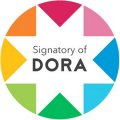
Aims and scope
The International Journal of Quality and Service Sciences (IJQSS) seeks to explore various aspects of quality and services as closely interrelated phenomena in the context of ongoing transformation processes of organizations and societies. Thus the journals' scope is not limited to micro perspectives of organizational and management related issues. It seeks further to explore patterns, behaviours, processes, mechanisms, principles and consequences related to quality and services in a broad range of organizational and social/global processes. These processes embrace cultural, economic, social, environmental and even global dimensions in order to better understand the past, to better diagnose the current situations and, hence, to design better the future.
The journal seeks to embrace a holistic view of quality and service sector management and explicitly promotes the emerging field of ‘quality and service sciences’.The journal is an open forum and one of the main channels for communication of multi- and inter-disciplinary research and practices.
Editorial objectives
- Facilitate communication and interaction between researchers and practitioners
- Encourage openness and exchange of knowledge as well as experience for increasing understanding
- Encourage multidisciplinary research and provide a forum within the coverage fields
- Encourage multiple methodologies, both qualitative and quantitative with varieties of sub-group methodologies
- Encourage researchers and practitioners to be more self-reflective
Publishes
- Relevant and related areas of Quality Sciences in a broad sense, theoretically and practically.
- Relevant areas of Service Sciences in a broad sense, theoretically and practically
- Linkage and integrative approaches of Quality and Service Sciences
- Linkage between Quality Sciences and Organization theories
- Linkage between Service Sciences and Organization theories
- Emerging tendencies and future trends within and between these areas
Coverage
- Ontology and epistemology of service and quality science
- Emerging service society and the related phenomenon
- Service economy and post-modern workplace
- Sustainable development of quality and service
- Role of quality in service businesses
- Interdisciplinary nature of service and quality science
- Organization, occupation and work in service society
- Comparative research on Quality and Service Management
- Exploring similarities and differences between Quality and Service Management
- Exploring the linkage between Service and Quality Management
- Integrative model of Service and Quality Management
- Linkage to other management and organization theories
- Customer participation and value creation
- Integration of stakeholder view in quality and service design
- Quality and Service standardization and assurance
- Improvement of quality and service standards
- Quality and service culture
- Attractive quality and service creation
- Design and innovation for service and quality
- Service and Quality in Experience economics
- Service and Quality creation for Sustainable development
- Quality and Service productivity
- Market culture and consumer behaviour
- Emotional labour and commercialization of human feeling
- Hospitality and care culture
- Work and family in service society
- Emerging trends, such as ‘Health consumption’, wellbeing /wellness industry, eco-tourism, eco-efficiency
- Globalization and Changing workplace in service age
- Relationship Management
- Public sector management including health, education and local government
- Consumption and identity
- Consumer attitude and behaviour
- The latest thinking and research in the field
- Service encounter
- Organizational design for building service and quality culture
- Service, Quality and environmental issues
- Quality and Service in e-business
- Quality and service in information technology
- Processes and operation management for service and quality
Latest articles
These are the latest articles published in this journal (Last updated: July 2024)
Top downloaded articles
These are the most downloaded articles over the last 12 months for this journal (Last updated: July 2024)
Top cited
These are the top cited articles for this journal, from the last 12 months according to Crossref (Last updated: July 2024)
Related journals
This journal is part of our Operations, logistics & quality collection. Explore our Operations, logistics & quality subject area to find out more.
International Journal of Quality & Reliability Management
A unique blend of theoretical knowledge and managerial relevance, International Journal of Quality & Reliability...
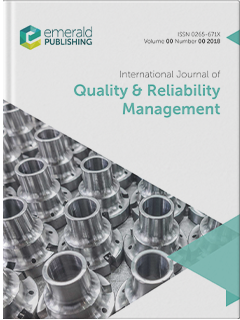
Benchmarking: An International Journal
Benchmarking: An International Journal is aimed to be a source of theoretical and application techniques for scholars...
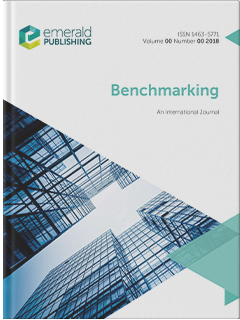
The TQM Journal
The TQM Journal seeks high quality international submissions from academics, researchers and practitioners. The journal...
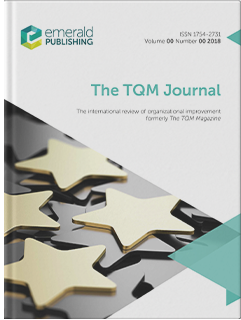

This journal is aligned with our responsible management goal
We aim to champion researchers, practitioners, policymakers and organisations who share our goals of contributing to a more ethical, responsible and sustainable way of working.
